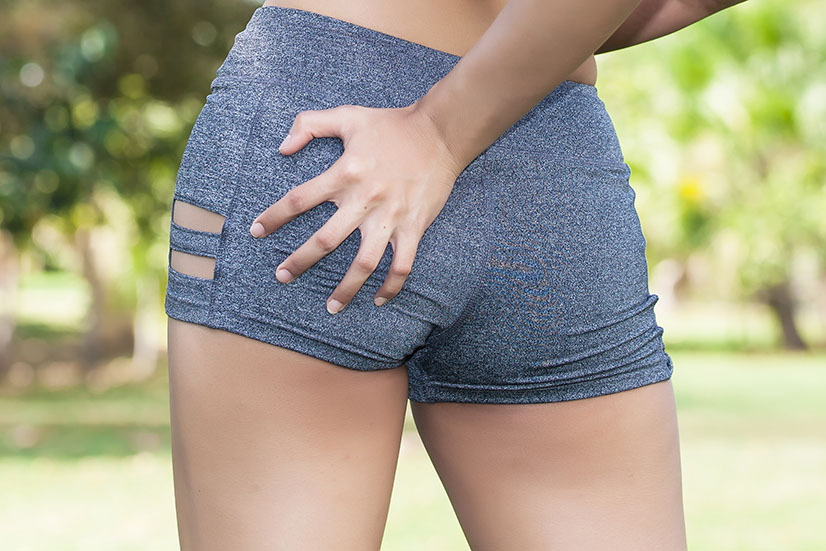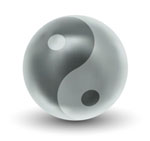
By Susan Tretakis – Coral Springs, Florida – I have a friend – who – unlike myself – is not known for speaking outside of the assigned politically correct language rules.
She was however, quick to say, when I told her about this article and my experiences last month, that “her sciatica is a bigger pain in the butt than her first and second husbands combined.”
For those of us who suffer from sciatica, it really is no joke.
There is tons of information about sciatica online; you can watch collected YouTube videos for nearly a month proclaiming how you can prevent sciatica. Online you can read FDA and patient testimonials about pain killers.
Or you can be like me, remain in bed, on a heating pad, wondering why this is happening to me AGAIN – and just generally give into a mega-self-pity party. And there in bed I stayed, missing my acupuncture appointment, missing my gym appointments, missing writing deadlines because sitting for any extended period was truly, an “impossible dream”.
Intellectually, I knew that TCM, acupuncture and Chinese cupping – known as “Hijama” – could help alleviate my pain. In fact, I knew a great deal – intellectually – about sciatica:
- The sciatic nerve is the longest nerve in the body – one of the reasons it can cause major discomfort not just in your lower back, but down your entire leg.
- There can be pain in your lower back or hip region.
- Pain worsens when sitting – definitely not a good thing for someone who writes at a computer.
- Pain can be supplanted by burning, weakness, and numbness in either the foot or leg.
- Pain can be continuous.
Standing up – once you manage to sit – to type the email that says your article will be late – can result in massive shooting pains from your lower back and down your leg.
Emotionally, I was a mess.
It’s only when I received a telephone call from my acupuncturist – threatening a home visit – which meant I would have to get up and clean my house so he would not think I am both a pathetic set of illnesses AND a messy housekeeper – that I chose the lesser of two difficulties: I pushed myself to slide sideways into the car and, and embarrassed, drove to his office.
So, there I stood in his office, listening to him explain that one of the great strengths of Traditional Chinese Medicine is that it takes the time to understand exactly how the problem manifests itself. This means – yes, not all sciatica is the same – and therefore not treated the same in every patient. While acupuncture and cupping points are sometimes shared from patient to patient – treatment is unique to the individual.
I knew from my on-going conventional methods of dealing with sciatica that the term is used rather loosely by main-stream medical practitioners. I also knew that sciatica is caused by a compression of the nerve roots that exit the spine in the lower back – or what medical professionals refer to as the sacral region. I also knew that the most common treatments – from the western side – were pain medications and time. Neither appealed to me; I don’t want to become reliant on pain medications and I have already been far too unproductive for too long a period of time. I vividly remember the cortisone injections – which lasted for only a month. I also know that one can aggravate their sciatica at any age after doing anything – and I take complete responsibility for being totally at fault for letting this get to this point.
Did I mention that I was STILL standing in my doctors’ office, propped against the wall?
Eventually, I made it to the table – and my acupuncturist began his usual magic. But this time, after checking my tongue and both pulses – which after 3 years of him doing so – still confounds my western training – and listened to him as he suggested we began with cupping.
I have been in this situation before; in fact, my research for this article led me back to one of my earliest posts on cupping. The problem is that for many – like myself – sciatica is always on the horizon and this time, I was just not as proactive as I should have been.
Yes, I admit it – this was a mega TCM fail.
With cupping, TCM practitioners place cups along the length of the nerve and upon any structures that may be compressing it. Known as “Hijama”, cupping applies negative pressure or suction to any tight muscles surrounding the sciatic nerve. It relieves the pressure caused by tight muscles and nourishes the parts of the nerves that may have been damaged by a restricted blood flow. Cupping also helps the body naturally remove any trapped cellular waste that may be hindering the function of the sciatic nerve.
Related – learn more about Chinese Cupping for Sciatic Pain
Like acupuncture, cupping follows the lines of the meridians. There are five meridian lines on the back, and this is where the cups are usually placed. Because my pain continued down my leg, cups were placed there as well. Using these points, cupping strives to “open” these channels – the paths through which the life energy flows freely throughout the body, through all tissues and organs, thus providing a smoother and more free-flowing “Qi” (life force).
My doctor, probably wishing to distract me from the pain – which I realize now both my pain and embarrassment were only making things worse – softly explained that Chinese cupping is one of the best deep-tissue therapies available. It is thought to affect tissues up to four inches deep from the external skin. Toxins can be released, blockages can be cleared and veins and arteries can be refreshed within these four inches. Research has shown that hands, wrists, legs, and ankles can be cupped, thus applying the healing to specific organs that correlate with these points.
People have told me that pictures of Chinese cupping scares them – that it looks painful. Trust me, I am no “pain warrior”; I can hurt myself by putting on sneakers or wrestling into and out of a sports bra. But cupping does not hurt – it’s not a burning or pinching feel – it’s simply lifting your muscle off of the nerve. In two words: it’s heaven.
And as I lay there last week, I wondered why it took me so long to just admit I hurt.
My acupuncturist likes to follow cupping with an acupuncture session; he believes that patients – stressed patients from pain, embarrassment, anger, whatever – deserve to be sent into a “Zen zone” after treatment.
Yes, I love acupuncture for what it can do for my over-thinking mind – but research tells us that sciatica is frequently treated by acupuncture. In a published and acclaimed study in “The Efficacy of Acupuncture for The Treatment of Sciatica: A Systematic and Meta-Analysis”, the authors did a comprehensive review of twelve studies involving over 1500 participants on acupuncture’s effectiveness. Results show that acupuncture treatments are far more effective than conventional western medicine. Another study, completed in 2017, shows that the effectiveness of acupuncture and herbal medicine for the treatment of sciatica were found to be extremely effective treatments. In fact, as a stand-alone therapy, acupuncture had a total effective rate of nearly 82% for pain relief and return-to-normal functioning for the patient.
I asked my doctor about this; he explained that by inserting small needles into specific sites on the body, the acupuncture needles trigger a response from the nervous system. This response from the nervous system leads the brain to release a cascade of natural painkillers, known as endorphins and enkephalins. Acupuncture increases the blood flow to the painful area as well.
TCM puts great faith in the body healing itself and while I generally agree with this, the past three weeks had created a bit of a “crisis of faith”. My pain would come and go. It followed no rhyme or reason. Then again, when does this thing we refer to as “life” have either rhyme or reason?
Here’s my takeaway from all of this: I know I have a family predisposition to sciatica. I vividly remember my mother being at home, on the couch, clasped in some kind of leg-extension contraption which elongated her leg because her doctor told her “Reading for too long can cause sciatica issues.”
I love to read – and can easily spend 4-5 hours in the same place SEATED on the patio or couch with a book.
I love to write – and can also easily spend 4-5 hours SEATED at the keyboard.
Now that I am retired, I can easily spend 4-5 hours SEATED in front of a sketchpad or easel.
Perhaps it is time for me to take TCM teachings beyond just eating and drinking differently; maybe it is time to realize that my Qi is dependent on how I treat my body from a physical viewpoint. I can set alarms – thanks to Alexa and Fitbit – to stand every hour. Research from chiropractors and physical therapists tell us that simply standing every hour for 5 minutes can greatly reduce the stress on our sciatic nerve. Kindly reminders from my acupuncturist tell me the same.
I just have to do it. And therein lies the issue: do I care enough for myself to do so?
Fully incorporating TCM into a life where the first 65 years were woven into conventional medicine is another post for another time.
Right now, I am thinking about the fact that while western research tells me that sciatica can come and go there is a great deal I can do to bypass its pain and its disabilities. Research tells me that sciatic pain can take up to six weeks to go away – unless there are severe underlying causes. That in itself is enough to make me set those alarms, and put a standing work-desk on my Amazon wish list.
Right now, I want to remind everyone that you do not need to be in pain from sciatica; there are options. Options who NEVER remind you how silly or foolish you may be.
Sciatica – what nerve – but it does kick ass.
The Acupuncturists accept insurance and serve the communities of Margate, Coconut Creek, Coral Springs, Tamarac, Parkland, Deerfield Beach, West Boca and offer free consultations daily.
Sources:
- Dr. Landon Agoado, Care Wellness Center
- https://www.medicalnewstoday.com/articles/7619.php
- https://www.webmd.com/back-pain/what-is-sciatica#1
- https://www.dc-acupuncture.com/physical-health/how-acupuncture-works-for-sciatica
- https://www.ncbi.nlm.nih.gov/pmc/articles/PMC4575738/
- https://www.spineuniverse.com/conditions/sciatica/alternative-treatments-sciatica-acupuncture-acupressure-biofeedback-yoga
- https://www.acupuncture.org.uk/public-content/public-ask-an-expert/ask-an-expert-muscles-and-bones/ask-an-expert-muscles-and-bones-sciatica/3935-can-acupuncture-help-sciatica.html
- https://www.sanfrancisconaturalmedicine.com/natural-health-news/sciatica
- https://www.zeel.com/t/acupuncture/expert-answers/will-acupuncture-help-my-sciatica
- https://puretherapyclinic.wordpress.com/2017/08/04/can-hijama-cupping-cure-sciatica/
- https://www.byrdie.com/best-alternative-healing-methods
